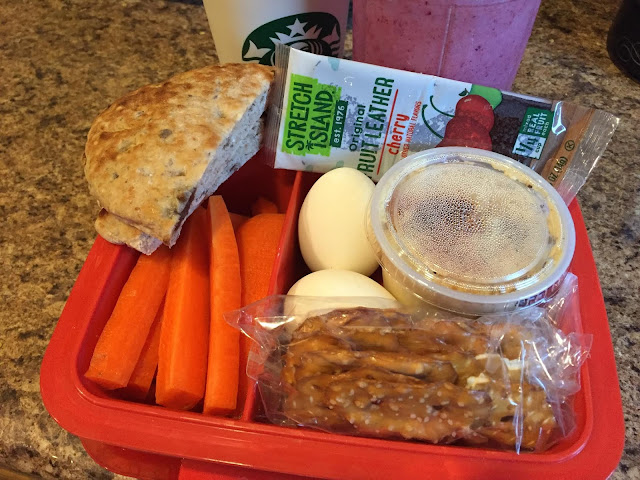Sourdough Bread
Adapted from Recipes and Techniques Adapted from Tartine Bread by Chad Robertson
INGREDIENTS
For the Levain:
1 tablespoon active sourdough starter
75 grams all purpose flour (approximately 1/2 cup )
75 grams bottled water (approximately 1/3 cup)
For the Dough:
800 grams King Arthur bread flour
75 grams Wheat Montana whole wheat flour
725-750 grams water - heated to 90 degrees
18 grams salt (I used flaked Kosher salt from Penzey's only because it was the first container I grabbed)
150 grams levain (I was aiming for 150 grams but I had just a tad more.)
I've made sourdough starter before and already had one going so I proceeded to the steps for building a levain using an active starter. Refer to the recipe for Tartine's Country Bread found on the NYT website for instructions for a sourdough starter using Chad Robertson's method.
The amounts for the levain makes just over 150 grams of starter. The Tartine recipe makes just over 400 grams of levain. Some people build their levain, measure out what they need, and put away the remaining as their starter. The only problem with this method is forgetting and using the entire amount for the dough. I like to treat my starter as I treat my container of instant yeast.
I basically followed the method for Tartine Bread except for a few changes based on comments from The Fresh Loaf discussion boards, a post on the Kitchn, various YouTube videos, and the many sourdough posts on the Perfect Loaf.
A few of the changes:
- Shortened levain build time due to increased temperature versus cooler overnight temps.
- Reversed the autolyse step and increased the time by starting the autolyse by mixing the flours with 700 grams water before the levain was ready. The levain was almost ready but not quite and it looked like it had about an hour left to go.
- The flours and water was autolysed for 1 hour before the levain was mixed it. The mixture was then allowed to sit another 30 minutes before salt and 25 grams of reserved water was mixed in. At this point I still had approximately 25 grams of water left. The dough looked really wet so I didn't add the rest of the water.
- I followed the bulk fermentation schedule outlined by Perfect loaf - a total of 6 sets of folds with 3 spaced 15 minutes apart and another 3 spaced 30 minutes apart.
- The dough was then divided, bench rested for 30 minutes for shaped, placed in baskets that were lined with clean towels and sprinkled generously with rice flour. I didn't mix rice flour with wheat flour and used straight rice flour. More rice flour was sprinkled on the top of the dough, covered with plastic wrap, left on the counter for another half hour or so and then they went into the refrigerator for 15 hours
- It took a good 1.5 hours before the dough came to room temperature and it didn't appear to have adequately proofed even though I allowed them to proof in the warm garage. I let it proof a little longer (about 3.5 hours) before I baked them at 500 degrees inside dutch oven for 20 minutes and another 25 minutes at 450 degrees with the lids removed.
I think I'll test other variations and maybe one day I'll make the recipe as written. Overall, this is a great recipe/method for making this style of high hydration dutch oven sourdough.
The sourdough took a lot of time and required a lot of attention but I didn't spend the entire weekend on it. I did manage to take a road trip out to Anza Borrego Desert to see the Super Bloom I've been hearing so much about. We couldn't find the Super Bloom and apparently we were not the only ones. We had several people come up to us, asking if we knew where the flowers were at. Everyone was looking for the magnificent display of flowers.
 | 










































































